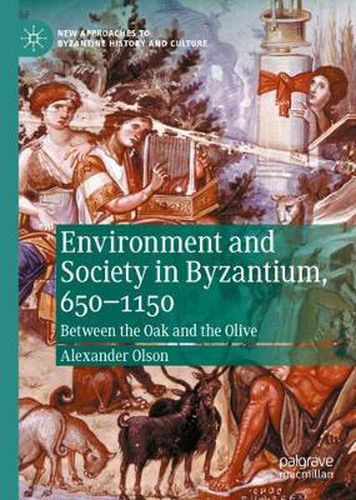Readings Newsletter
Become a Readings Member to make your shopping experience even easier.
Sign in or sign up for free!
You’re not far away from qualifying for FREE standard shipping within Australia
You’ve qualified for FREE standard shipping within Australia
The cart is loading…






This title is printed to order. This book may have been self-published. If so, we cannot guarantee the quality of the content. In the main most books will have gone through the editing process however some may not. We therefore suggest that you be aware of this before ordering this book. If in doubt check either the author or publisher’s details as we are unable to accept any returns unless they are faulty. Please contact us if you have any questions.
This book illuminates Byzantines’ relationship with woodland between the seventh and twelfth centuries. Using the oak and the olive as objects of study, this work explores shifting economic strategies, environmental change, and the transformation of material culture throughout the middle Byzantine period. Drawing from texts, environmental data, and archaeological surveys, this book demonstrates that woodland’s makeup was altered after Byzantium’s seventh-century metamorphosis, and that people interacted in new ways with this re-worked ecology. Oak obtained prominence after late antiquity, illustrating the shift from that earlier era’s intensive agriculture to a more sylvan middle Byzantine economy. Meanwhile, the olive faded into the background, re-emerging in the eleventh and twelfth centuries thanks to the initiative of people adapting yet again to newly changed political and economic circumstances. This book therefore shows that Byzantines’ relationship with their ecology was far from static, and that Byzantines’ decisions had environmental impacts.
$9.00 standard shipping within Australia
FREE standard shipping within Australia for orders over $100.00
Express & International shipping calculated at checkout
This title is printed to order. This book may have been self-published. If so, we cannot guarantee the quality of the content. In the main most books will have gone through the editing process however some may not. We therefore suggest that you be aware of this before ordering this book. If in doubt check either the author or publisher’s details as we are unable to accept any returns unless they are faulty. Please contact us if you have any questions.
This book illuminates Byzantines’ relationship with woodland between the seventh and twelfth centuries. Using the oak and the olive as objects of study, this work explores shifting economic strategies, environmental change, and the transformation of material culture throughout the middle Byzantine period. Drawing from texts, environmental data, and archaeological surveys, this book demonstrates that woodland’s makeup was altered after Byzantium’s seventh-century metamorphosis, and that people interacted in new ways with this re-worked ecology. Oak obtained prominence after late antiquity, illustrating the shift from that earlier era’s intensive agriculture to a more sylvan middle Byzantine economy. Meanwhile, the olive faded into the background, re-emerging in the eleventh and twelfth centuries thanks to the initiative of people adapting yet again to newly changed political and economic circumstances. This book therefore shows that Byzantines’ relationship with their ecology was far from static, and that Byzantines’ decisions had environmental impacts.